Achaemenid army
The foundation of the Achaemenid army, the great army of Iran during the time of the Cyrus the Great empire, was laid in the capable hands of that great emperor, and due to the sacrifice and bravery of the same army, the borders and gaps of his vast country were always protected from the encroachment of foreigners for several centuries.…
Symmetric year 556 BC, the star of prosperity of Cyrus the Great of the Achaemenid dynasty appeared from the horizon of the country of Pars, and in the light of the bright light of his presence, a glorious empire was formed, the like of which the eyes of the world had never seen before.. The foundation of the Iranian army was also laid at the same time by the capable hands of that great emperor, and due to the sacrifice and bravery of the same army, the borders of his vast country were always protected from the encroachment of foreigners for several centuries.…
infantry corps
According to Xenophon, the Greek historian, when Cyrus the Great took over the command of the Persian army, the main line of the army was infantry, which mostly came from far away to fight and were armed with bows, arrows, harpoons, and flaks.. In order to create and strengthen the fighting spirit, Koresh ordered thirty thousand Persian soldiers, who according to the training principles of the Persian country had outstanding soldierly qualities, to change their weapons into spears and swords and get used to close combat and hand-to-hand combat..
that order “Heavy infantry” They sing and their official weapon consists of a long spear and a
Or there was an ax that was used with the right hand and a small shield that was woven from strong tarka and a sword.
They used to hold their left hand and tied it to their chest. Other people on foot have bows and arrows in their hands
Zubin were armed who were used as relief squads on the battlefield
As it can be seen from the pictures and archeological findings, the war tools of this group of Achaemenid soldiers were: Spears and arrows, small and crescent shaped shields woven from reed, oval shaped shields with a metal protrusion in the middle called the shield, which usually has beautiful images carved on it, large and rectangular shields, Iranian swords whose handles, according to the usual custom of Iranians, are The face of an animal's head was made, a short sword called "Akinake" that was hung on the waist, knives whose handles were made in the shape of animals such as lions, cows, and mountain goats, and a bow that was characteristic of Iranian ethnicity, along with an archer that was specific to Iranians. Was.
Cavalry
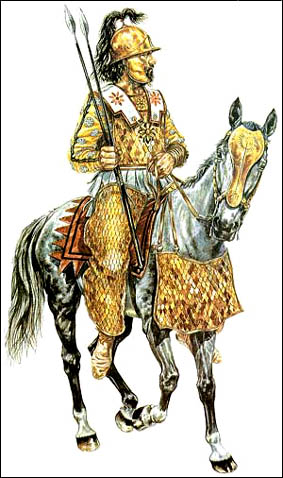 According to Xenophon, during his stay at the Median court and during the first encounter with the Lady horsemen in the battle of "Peterium", Cyrus recognized that the Persian horsemen were very weak compared to the Median horsemen and especially the famous Lady horsemen, so he increased the number of Persian horsemen. He increased the number of people from two thousand to ten thousand and in order to encourage young people to ride and ride, he decided that anyone who buys a horse from the government must always ride and become familiar with and interested in his horse and take care of it. And try your best and give points and prizes to the good riders that were given to them in the competitions..
According to Xenophon, during his stay at the Median court and during the first encounter with the Lady horsemen in the battle of "Peterium", Cyrus recognized that the Persian horsemen were very weak compared to the Median horsemen and especially the famous Lady horsemen, so he increased the number of Persian horsemen. He increased the number of people from two thousand to ten thousand and in order to encourage young people to ride and ride, he decided that anyone who buys a horse from the government must always ride and become familiar with and interested in his horse and take care of it. And try your best and give points and prizes to the good riders that were given to them in the competitions..
Chariots with scythes
One of the new inventions of Iranians in the dynamic era of the 5th century BC was the invention of the scythe cart.. This chariot had threatening spears and swords on all sides, and sickle-like knives in the center of the wheels, some of which were bent downwards and others upward..
These knives cut into pieces anything that got in the way of galloping horses.. In fact, Iranians owe their victories to this invention until the end of the fourth century BC.
According to Xenophon's narrative, until the time of Cyrus the Great, the typical war chariots of that period were made and used according to the tradition of the "Trojans" and this type of chariots had become common among the Medes, Assyrians and other Asian nations.. While testing them, Cyrus ordered to make new chariots that are more suitable for war. The wheels of those chariots were made stronger and their axles were longer than the old chariots in order to better prevent the risk of crushing the wheels and overturning of the chariots..
The chariot driver's seat was made of very strong wood and in the form of a turret, the height of which reached only up to the driver's elbows so that he was free to drive the horses.. At the two ends of the axle of the wheels, there were two iron scythes with the width of two "arsh" facing downwards and two more scythes facing upwards right below them..
300 units of new chariots were prepared during the time of Cyrus, and according to his order, the place of these chariots in the battle formation was in front of the first line of the infantry, and their main mission was to gallop on the ranks of the enemy and split his formation, and open the way and smooth the route of the infantry. It was an attack system. The terrifying and lightning rush of the chariots destroyed any resistance in its path.
Sickle chariots were common in the Iranian army until the end of the Achaemenid period, and in the battle of "Gogmel", the last battle between Darius III and Alexander, there were two hundred sickle chariots in the Iranian army, and Diodorus says about this.: "The attack of scythe chariots was very terrifying and the cutting of their scythes was so sharp that it cut the Macedonian infantry in half". In addition, in this battle, there were fifty war elephants in the army of Darius III, which caused fear and panic among the Macedonians, and it is known that the use of elephants in war has become common in the Iranian army since Iran's domination of Abyssinia, North Africa, and Western India..
Rounds
In addition to scythe-armed horses, Cyrus the Great, on his own initiative, ordered the construction of long and wheeled wooden towers, each of which had eight chains and eight buffaloes were tied to them; Each tower was divided into several houses and twenty archers were placed in them.
Of course, the movement of these chariots was slow, and during the war, they lined up behind the infantry lines like a fence, so that as soon as the infantry were forced to retreat due to the pressure of the enemy, as soon as they got close to the line of these chariots, the attacker suddenly The archers rained on the chariots and had to stop, and the infantry under the shelter of the chariots was able to organize itself and once again” to attack.
The height of these turrets was so high that the archers could completely dominate the enemy from above them, and sometimes the commander would ride on one of these turrets to observe the battle scene and monitor the operations of the sides from above..
Navy
During the time of Darius the Great, the Achaemenid Emperor thought of creating a naval force and first used the ships of the Greek colonies of Asia Minor and the people of Egypt and Phoenicia.. But then, by the order of the king, ships were built in Phoenicia, Caria, Ionia, and the shores of the Bosphorus, which, according to Herdot's writings, were larger and faster than Greek ships..
In general, the ships of the Achaemenid navy were of three types:
1- "Three Roman" ships, which have three rows of oarsmen on three floors and are considered warships.
2- Long ships for transporting horses and soldiers.
3- Smaller ships for carrying cargo and carrying provisions and camping equipment.
The sailors of these ships were mostly Phoenicians, Greeks or Egyptians, but their officers were always chosen from Persians and Medes.. As can be seen from the statement of the mentioned historian, the loading of these ships to today's weight 5 until the 15 tons, the number of ships in Iran during the time of Xerxes was mentioned as four thousand.
From the information given by the mentioned historians, it is clear that Iranians were familiar with seafaring, as during the time of Darius, two expedition groups from the shores of the Algerian Sea (Aegean Sea) It is sent to Greece and Italy, and from India to the Sea of Oman and the Red Sea, and through the Nile to the Maghrib Sea, and during the time of Xerxes, a group was assigned to explore the coast of Africa..
During the Achaemenid era, in some wars, it is seen that Greek mercenaries and mercenaries were also used, and this issue was more involved in the laxity of discipline and disorder of the Iranian army of that period.. As later, in the wars of Cyrus the Small with Ardeshir or the wars of Darius III with Alexander, the results of this work were well known..
Combat makeup
Before any campaign and before any action, Iranians first drew a war plan and carefully examined the plan in a group of army chiefs.. The work that later became an important principle in wars all over the world.
In order to be aware of the way of using different orders in that period, we study the battle formation of Cyrus' forces in the battle of "Tambre" from Xenophon's book.:
1. In front of the front, a hundred scythe chariots in a line.
2. Behind the chariots in the first line, an attack group consisting of fifteen thousand heavy infantry of Persian weapons with a decoration twelve rows deep; The flanks of this line were covered on each side with four thousand Persian horsemen four rows deep.
3. harpooners in the second line to throw their harpoons from above the head of the first line to a close distance.
4. The archers were in the third line and they were throwing their arrows over the heads of the people in the front lines..
5. The reserve units, which were the other half of the heavy infantry, were in the fourth line.
6. Behind these lines, mobile towers or turrets were in a row and formed a strong and solid fence..
Xenophon also mentions "Jamaz" horsemen in Koresh's war arrangement, which were only used to tame the lady horses.. According to Xenophon, in addition to the flags that had different parts for each, the flag of the Iranian command was a "golden eagle" that was installed on a tall tree with raised wings.. Xenophon adds that in his time, the flag of the kings of Iran was like this.
New organization
The formations of the army in the ancient period, especially the Achaemenid period, as it appears from Greek sources as well as inscriptions and Achaemenid tablets, were very organized..
The system of division of this army was ten years and according to Greek historians, this division was much better than the division of the Greek soldiers and it is said that it was unmatched in the Asian armies until the Mongol period.. Ten warriors command a squad (From the word Daseh Piti) formed; Ten squads were a group under the command of a centurion (drink); Ten groups of a "regiment" led by Hazarbad (From the word Hajar Pitish) would make; Ten regiments would form a "division" under the supervision of one Biorbod (Biuropathy).
We see the same division in the army today. This organization penetrated through Iran in Jewish, Armenian, Greek and even ancient German organizations, i.e. Gothic..
The highest military power of the Achaemenids was six legions, which together with the "Eternal Army" formed seven legions, and thus the total number of legions reached the holy number of seven..
Greek historians are of the opinion that during the time of Darius I, the Iranian army found a new organization and permanent garrisons were established in different capitals and centers of Iran's dependent countries and border fortresses.. Darius the Great, while reforming Iran's national organization in terms of military organization and expansion of police forces, divided his country into five military regions and assigned the command of each region to a general..
In the main capital of Iran, which was the seat of the king, a special guard composed of two thousand horsemen and two thousand footmen was formed from Persian, Median and Shushian nobles, who were distinguished in terms of weapons and uniforms and were assigned to protect the king.. Their weapons consisted of a long spear, a long bow and a shrapnel full of arrows, and during ceremonies, a gold bullet or simin was installed on the tip of the soldiers' long spears..
Darius formed another special corps, which numbered ten thousand people and was divided into ten regiments.. These people were called the "Eternal Army" because their number was never reduced and instead of those who died or were killed in the war, they immediately appointed others.. The members of this army were all experienced in combat, brave and agile, and excelled in shooting and riding..
In the study of the Achaemenid army, one of the most surprising aspects is the existence of this eternal army.. This 10,000-strong army formed the "stand-by army" of the Iranian emperor and were the royal guards..
The image of eternal soldiers can be seen in the paintings of the eastern front of Apadana, that is, the main view and the first hall of the throne of Jamshid, behind the head of the king who is sitting on the throne, in three rows on top of each other.. In this picture, about one hundred soldiers representing ten thousand soldiers have been depicted.
Achaemenid's long pleated dress, three-banded Iranian shoes and a knotless band around their heads indicate that these people are Persian..
Iranologists conclude from these motifs that all the "Ten Thousand Immortals" were Persians.. The spear of all these soldiers ends in a small pomegranate at the bottom. Therefore, the Greeks called them "apples"..
Every army has a "sahehbod" or lieutenant general (Spadapati) It says that the Commander-in-Chief of the Guard was immortal and had extraordinary power. This general was either the Shah himself, or was chosen by the Shah from among his family members or from among his trusted friends..
One of the characteristics of the Achaemenid period was the participation of soldiers and commanders in battle, and a large number of them were killed in the battlefields.. For example, out of the eleven sons of Darius the Great, five lost their lives in the campaign to Greece.
According to Strabo, the Greek historian and geographer, Iranian soldiers from 20 until the 50 They have been serving in the army for years. The training of Iranian soldiers, especially the sons of nobles, was very difficult and they had to learn all kinds of sports, making all kinds of tools, shooting and javelin, as well as endurance in difficult places and long journeys, and most of all, they had to learn to tell the truth.. During the battle, the soldiers also wore helmets and iron helmets to protect their bodies..
During the time of Dariush, permanent garrisons were established in the center of each of Iran's subordinate countries to maintain security and prevent potential aggression from neighbors.. The number of people in these garrisons changed according to the size and importance of the region, such that both of them sent the number of Iranian garrisons assigned to Egypt. 240 Thousands of people mention it. There were fixed garrisons in the border forts, which were headed by the commander of the fort "Dezhban"..
Of course, these garrisons were apart from the cavalry and infantry units that were summoned from the provinces during the war, and these units often did not have regular military training and entered the Shah's army with different clothes and weapons, different languages and habits, and under the command of their local chiefs.. According to Herodotus, the Greek historian, such people sometimes lacked their armor and helmets, and their shields were made of woven straw and their spears were short..
Xenophon writes in this way in the fourth chapter of his book called "Economics".: Shah Pars attaches great importance to the army. This means that he has ordered the governors of every state or people who pay tribute to keep a few horsemen, archers, and archers, and he has especially warned them how necessary and necessary it is to provide these forces to maintain security and defense against an aggressor enemy. Is.
He continues: Apart from the mentioned forces, the king has garrisons in the castles and these different forces and mercenary soldiers who must be fully armed.. The king sees Sun every year. During San, apart from the garrisons of the castles, who must always be present at their post, some units also gather in the field designated for San, and the units that are close to the king's residence pass in front of the king's special envoys.. In the areas that are orderly in terms of weapons and equipment, especially horses, they give grades and points to their leaders, and on the contrary, severe punishment is imposed on the leaders whose parts are untidy and bad, and most of these people are dismissed from their jobs, and others are appointed in their place.
According to the narrative of Herdot and other historians, each of these different military groups had their own flag, but they did not explain how these flags were and they talked more about the commander's flag, which, as mentioned, is mounted in the form of a golden eagle with outstretched wings on top of a tall tree. They did it or they raised it on the royal wheel.
Clothing and supplies
From the writings of Greek historians, it appears that the clothes of different military personnel in each of the nations and tribes under Iran were in the form of the usual clothes of the same nation or tribe, and generally consisted of a long coat that reached below the knee and on it A belt or shawl is tied and pants that cover the legs. People's hats are usually made of felt and strong and round in shape (The Persians) or a few Turks (material) Or long and sharp ( The Scythians ) have been.
It is common to play trumpets and serenas during an attack on the enemy, and all the people panicked together during the attack. According to Herdot's description of Khashoggi's camping trip to Greece, in addition to the food and supplies for a few days that accompanied the soldiers in the war camps, along the way, the establishment of supply centers and provision of food and supplies warehouses, as well as the construction of military roads and Temporary bridges and boats on rivers, as well as felling forest trees to open the way for troops to pass, have been common..
Therefore, the operations related to the "Fourth Pillar" were carried out successfully in that period, as Xerxes' campaign to Greece was later studied and researched, especially in terms of matters related to the fourth pillar.. In general, the historians and commanders who have researched and pondered on the statements of Herodotus regarding this case, have considered the campaign of Xerxes to Greece as one of the most important events in history, and they are all of the opinion that it is one of the outstanding and unique military operations of the era in terms of strategy. it is old.
One of the other works of the Achaemenid kings era that is important from a military point of view is the construction of roads to establish communication between the states and the center and between them, as well as to facilitate the transfer of military forces from different barracks to the war front, which most Greek historians especially Both of them praise the goodness of these roads.
Another was the creation of news media, including numerous press houses, including a large number of wind-footed horses and great agile riders, who would deliver military orders and orders quickly and hand in hand to their destination.. Every hour, the royal couriers on the highways exchanged the horses they had saddled with new ones, and in this way, they conveyed messages from one place to another with extraordinary speed..
Herodotus tells about the speed of movement of Achaemenid chapar: "No animal can be assumed to be more agile and faster than these chapar."
During the Achaemenid period, they built four arches and towers on the height lines that had a view of each other, and they communicated news and urgent orders by lighting fire on them with special signs.. As both of you refer to communication with fire in several cases
does, including by transmitting the news of the conquest of Athens through the Cyclades islands to Sardis.
Even today, in some parts of Iran and mostly in the southern regions, the ruins of these four arches and towers, which seem to have been used to communicate with fire, are visible on the heights..
King's inspectors
On the part of the Achaemenid kings, two inspectors were appointed for each state, who were chosen from among the original, experienced and trusted people, and they were the eyes and ears of the king, and they made all their observations about the state of the country's officials and the army through a special chapar and They sent directly to the king. It was the presence of these individuals that prevented deviations from occurring in the course of military and country work, and these inspectors had executive powers along with them..
discipline
Regarding the discipline of the army during the Achaemenid period, extreme care and strictness was practiced, the punishments imposed for military crimes, especially treason to the king and the country, were strictly enforced.. At the same time, they paid special attention to the actions of the judges and any judge who ruled against justice. Under the review of Mi Graft's decision. For this reason, according to Plutarch's and Diodorus' narratives, judges were chosen from among the heads of first-class families who were always respected and considered in Pars, and their presence was used even in the military council..
From the descriptions of the soldiers and the army in the Achaemenid period, what is the hallmark and pride of every Iranian in the history of the Achaemenid wars and throughout the history of Iran is the spirit of bravery that existed among the soldiers of Iran, and its highest expression can be found in the personality of Cyrus the Great.. Iranians showed kindness to any enemy who asked for refuge and shelter and usually accepted his request and treated the prisoners with kindness.. They treated the captured nobles and kings in a manner worthy of them.
Cyrus honored all the kings who were defeated by him and gave them land and kingdom or even the government of a region so that they could live in comfort.. His chivalry was such that his staunch enemies turned into loyal and caring friends. A prominent example of these kings is Croesus, King Lady. A spirit that continued in the history of Iran and appeared again and again in the form of Pahlavi figures and after Islam, Ayari..
Click on the link below to download the unique book on the structure of the Achaemenid army


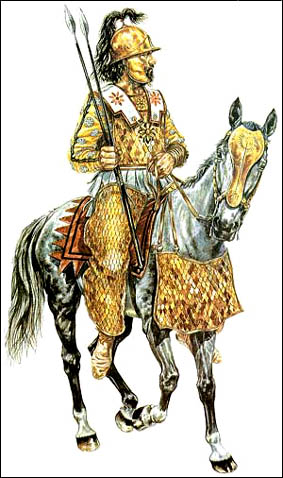
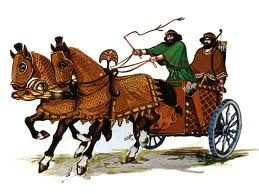
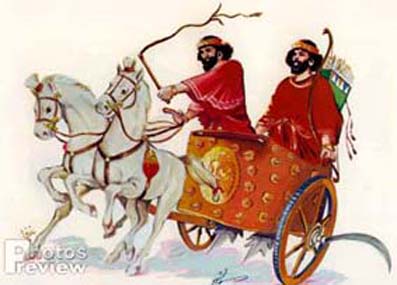
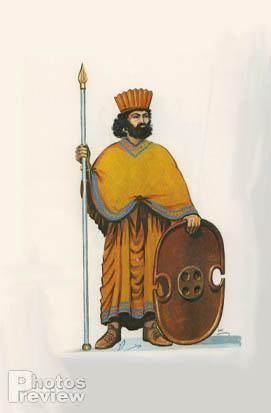
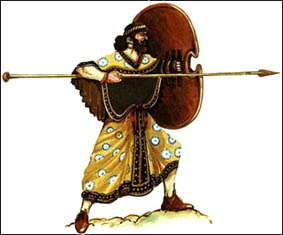
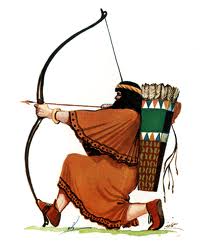
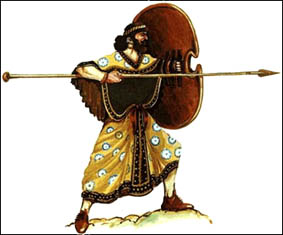
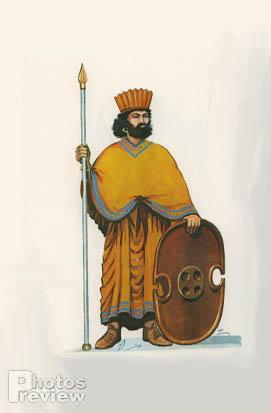
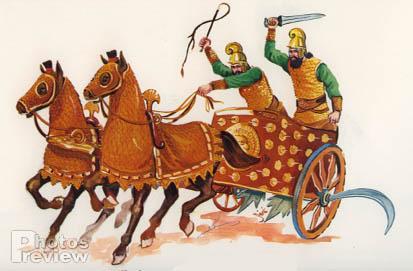
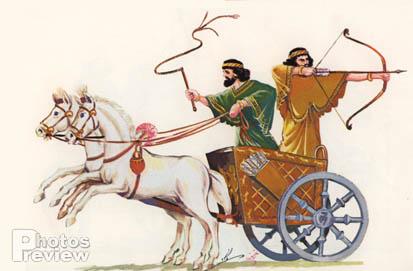
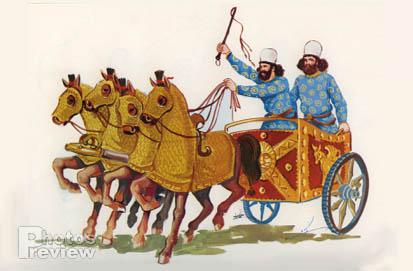
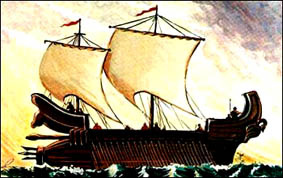
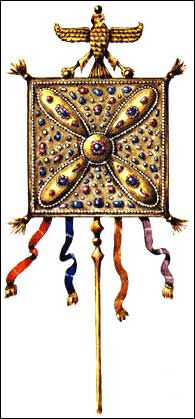

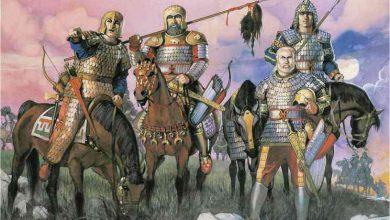

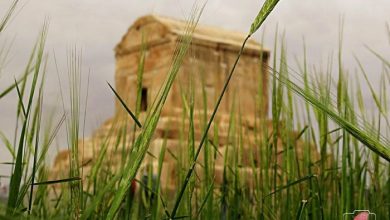
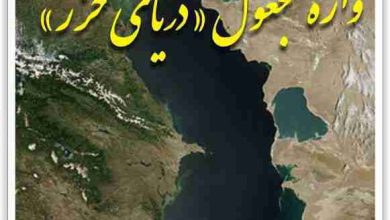
Thanks for your good content
One thing was never said about the Achaemenid soldiers . What was the shape of their hats?
Usually, in the reconstructed pictures of Achaemenid soldiers' hats, there are cloth or felt hats, and iron hats are rarely seen.
Besides, Xenophon says in his book that Iranians put feathers on their hats . But no image of the type of hat has been made
Or when Herodotus is explaining the battle of Arsam, he talks about the iron mask
The Achaemenians were the strongest empire in the world in the ancient times. Hail to Cyrus the Great and King Xerxes. I wish we would value our history one day and stop making Arab history films.
Can you tell me the source of the photos?(The source from which the photos were collected)Can I ask another question, what is the type of design of the photos?
Thank you for your good content, but I did not understand this forgiveness”People's hats are usually made of felt and strong and round in shape (The Persians) or a few Turks (material things)” A few Turks (material things)What does that mean? Did Iran have Turks at that time??
درود
Turkish
See this text:
Their shields were made of wicker and their spears were short.
People's hats are usually made of felt and strong and round in shape (The Persians) or a few Turks (material things) or long and pointed ( The Scythians ) have been.
That is, the Madis used a style to make hats that used several tarke pieces!
thank you
It was very beautiful and interesting, thank you. ^_^
Hello. Put the written sources of your article on the site. I need them very much. This evening please
In general, many historians have mentioned:
(Marsdon، ۱۹۶۴:۳۷)
Empire of Iran, pp. 35 and 36.
Empire of Iran, pp. 35 and 36.
Pordawood (۱۹۶۹/۱۳۴۷:۴۳)
(Zoka, 1971/1350:۶۹)
coach (۲۰۰۰:۲۵۸)
(Museum registration number 1322) (There are many works of the National Museum about Achaemenid war weapons
See Mehrisht paragraph 101 and paragraph 131
The book "Army of Achaemenid Iran" written by "Duncan Head" and translated by "Mohammed Aghajari" by "Qaqnoos" publishing house
Dear Sir, I am your servant. This site is the best site in the world. Peace be upon you, Sir. Ahura Mazda..
درود
Thank you for your content
But I think it would have been better if you had arranged the content better
Because the photos are suspicious and the texts are not in the same order
The eyes get tired
It was great. Thank you
Please include information about the powerful Parthian cavalry.
Good luck. Don't hurt your hand
Hello
Thanks for the beautiful content
Excuse me, what is the source of your photos?
What do you mean by source?
Where did the photos for the Persians of the fortress come from, or what documents were these pictures taken from?
Good luck.
thank you
Sir, thank you for this comprehensive article. Keep your heart warm, Ahura Mazda
Thank you Arya brother
Thank you for your kindness